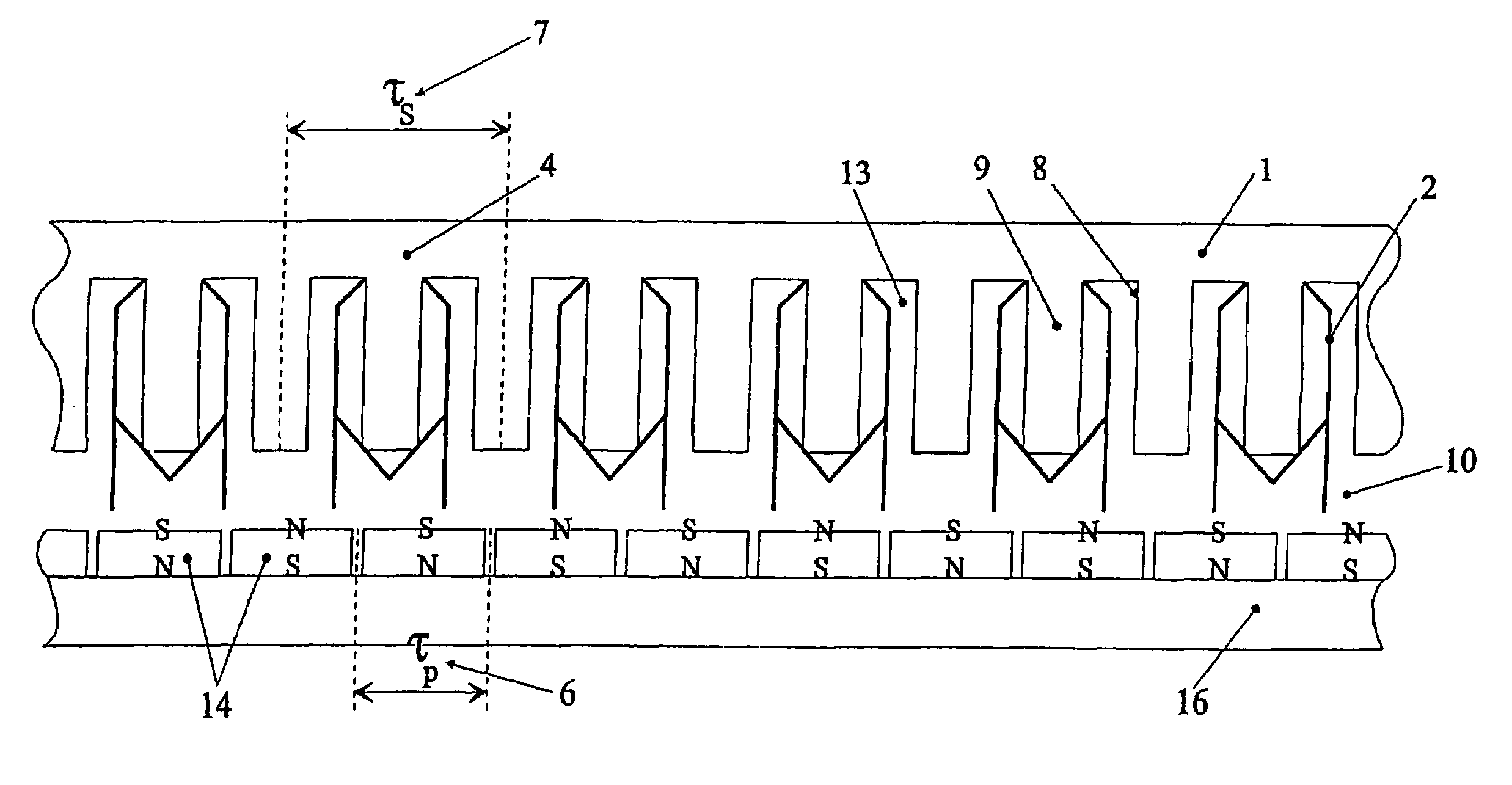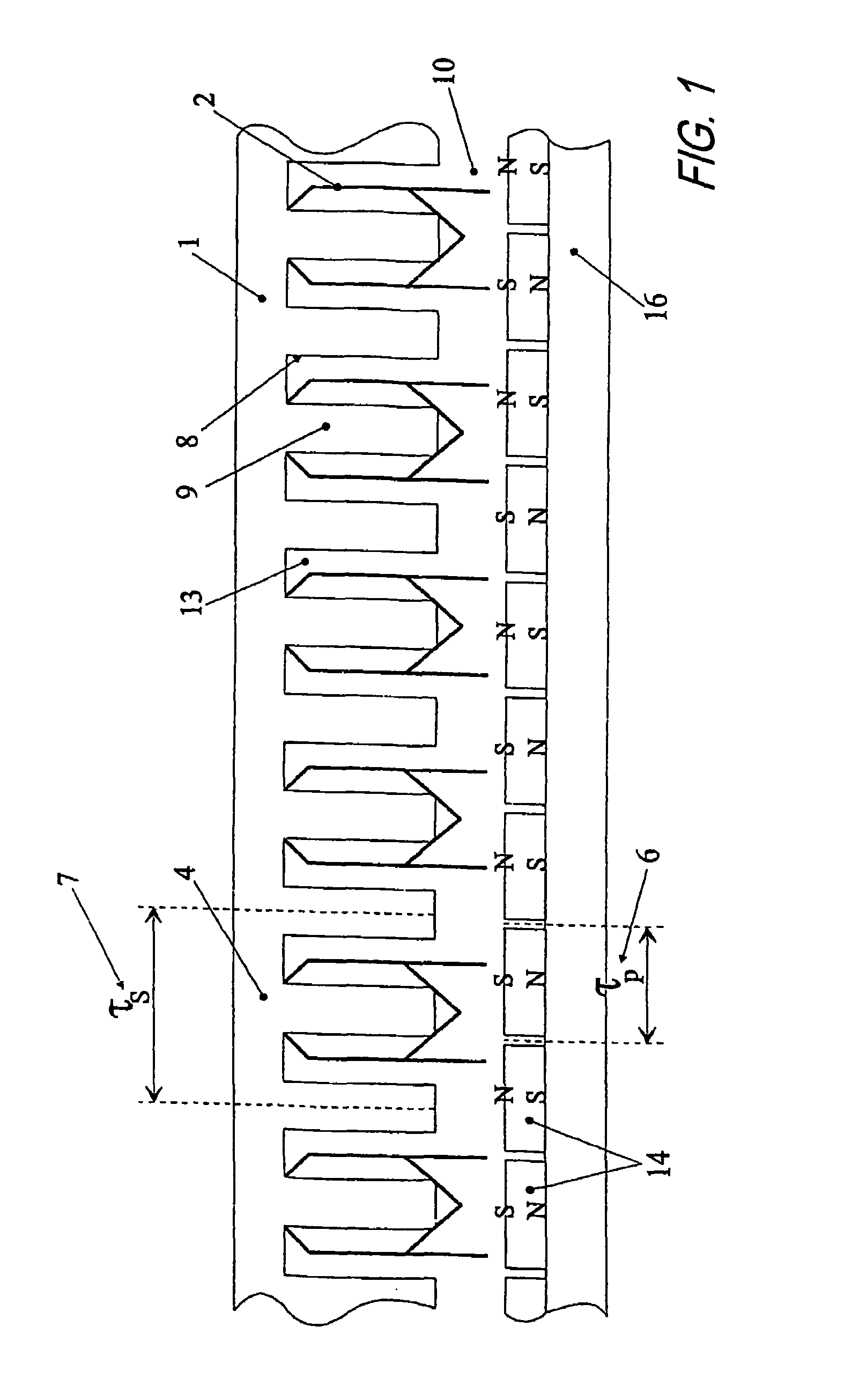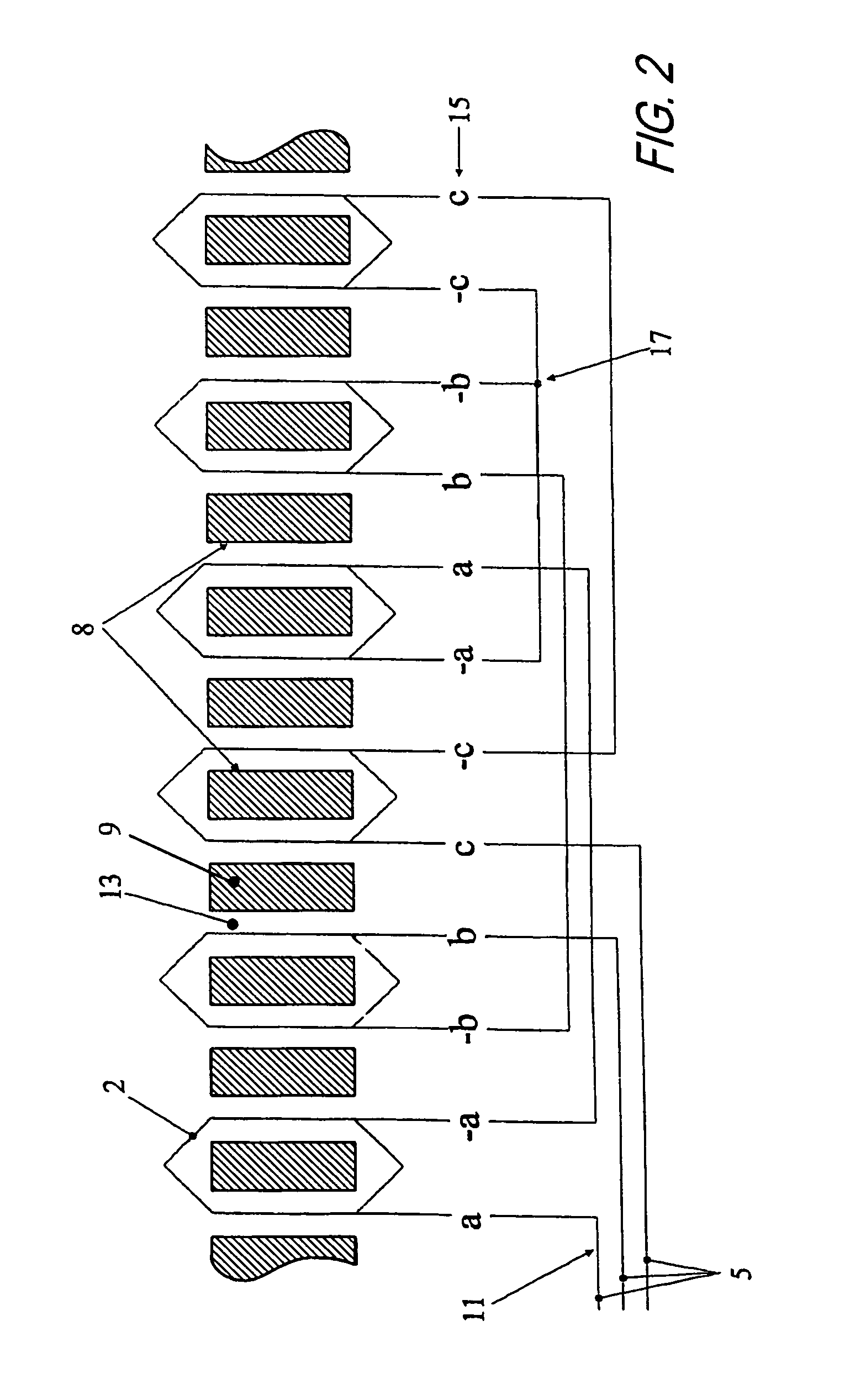Travelling field synchronous AC motor
a synchronous ac motor and travel field technology, applied in the direction of rotating magnets, synchronous machines with stationary armatures, windings, etc., can solve the problems of limiting the use of servo applications, large demands on the accuracy of manufacturing processes, and unwanted variations in the output torque or force of motors, so as to maximise the output torque and maximise the output torque. , the effect of rigid and stable motor structur
- Summary
- Abstract
- Description
- Claims
- Application Information
AI Technical Summary
Benefits of technology
Problems solved by technology
Method used
Image
Examples
Embodiment Construction
[0047]FIG. 1 shows a front view schematic of a multiphase synchronous AC motor in cross section, whereby the stator or primary side (1) is constructed of a sequence of toothed-modules (4) which are themselves composed of one or more teeth (9). The schematic of FIG. 1 can be thought of as showing a cross-section of the primary side (1) of a cylindrical machine, which has first been ‘sliced open’ down its length and rolled out flat. This structure can be used to represent the functioning of a linear or a cylindrical machine.
[0048]The motor primary (1) and secondary (16) sides are made up of a number of thin ferromagnetic steel sheets known as laminations which have a cross-section as shown in FIG. 1, these laminations are stacked together to form the motor primary (1) and secondary (16) sides. The motor may have a further mechanical structure or housing used to hold the stacked laminations.
[0049]Each of the primary side (1) laminations displays a repeating ‘T’ shaped pattern along its...
PUM
 Login to View More
Login to View More Abstract
Description
Claims
Application Information
 Login to View More
Login to View More - R&D
- Intellectual Property
- Life Sciences
- Materials
- Tech Scout
- Unparalleled Data Quality
- Higher Quality Content
- 60% Fewer Hallucinations
Browse by: Latest US Patents, China's latest patents, Technical Efficacy Thesaurus, Application Domain, Technology Topic, Popular Technical Reports.
© 2025 PatSnap. All rights reserved.Legal|Privacy policy|Modern Slavery Act Transparency Statement|Sitemap|About US| Contact US: help@patsnap.com



